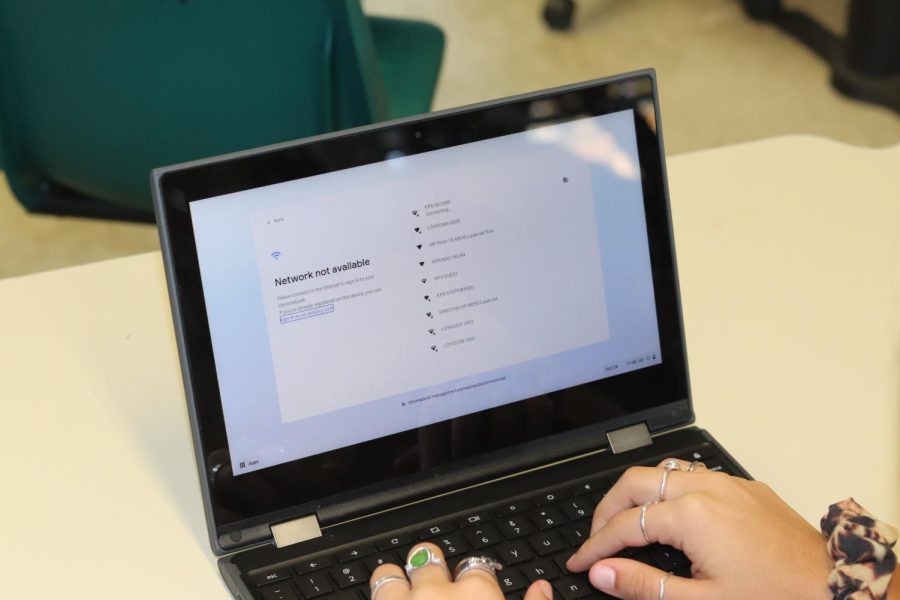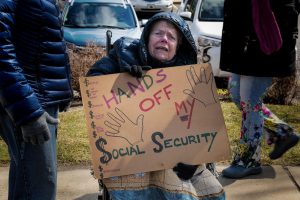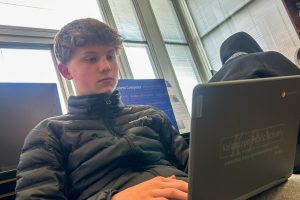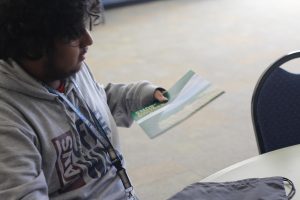Without KPS Guest WiFi, teachers and students struggle to function at Norrix
Credit: Gracie Goschke
Students have troubles getting on the WiFi in the K wing. This causes many delays and troubles in classes.
November 2, 2022
With the 2022-2023 school year back in full swing, students are still getting used to major changes in the building.
In past years, students have been able to easily access the Guest WiFi network. This year, they came back to the WiFi being off, and frustrations with cellular dead zones in the building have grown.
This decision was made based on a couple different issues that were seen last year. Fighting, socioeconomic status, and the airdopping of pornography were the main reasons behind this, according to Loy Norrix Principle Christopher Aguinaga.
The use of phones has also created issues throughout the school and the classrooms: teachers have a hard time getting kids to pay attention and do their work.
During the 2020-2021 school year, Kalamazoo Public Schools made the decision to go fully virtual. When students were on their chromebooks all day everyday, they learned different ways to disengage from the lessons such as setting up phones behind their computer screens, which ultimately led to doing similar things when returning to in-person learning.
“When we got back last year, it was the first time I noticed the phone set up behind a book thing, or otherwise kids trying to completely disengage with headphones in,” English teacher Brianna English said.
Turning off the WiFi has helped this issue a little bit, but other problems have continued to rise.
“I don’t get text messages from anybody that I need, like my parents or anything like that,” said senior Robbie Kays.
Students are struggling to contact parents, teams, coaches and more. Although there are land lines in every classroom, as well as the office, not every parent can answer their phones right away.
There are a lot of families who have parents that both work and that are unable to be interrupted on demand. With a simple text, parents and guardians are able to respond to their child’s text message when they have the chance.
“I try not to miss anything, but sometimes several people call the phone at the same time,” said secretary Stacey Davis.
While parents and others do have the ability to call the office, in different emergency situations a simple text is the best way to communicate. When people call the office, sometimes there is no answer, forcing people to leave messages that are not heard immediately.
“If there was any type of emergency, I wouldn’t know because I get no texts,” said senior Gabe Lubbers.
In the J, upper and lower K and M wings, students are unable to use their phones due to the lack of cellular service. This has also caused roadblocks for some teachers in these areas, especially during the first couple weeks of school, before students were given their chromebooks.
“A lot of people had to switch gears right in the middle of their lesson because kids couldn’t get on it [the WiFi],” English said.
This delayed teachers’ plans, and students started off on the wrong foot. It made it difficult for students to do their work while in school, giving them more work to do at home, on top of the homework that is already assigned almost daily.
“Every kid has an opportunity to get a chromebook and to connect to the internet via chromebook for educational use” said Aguinaga.
Though this is true, teachers and students can run into issues in certain cases. With the school blocking a lot of sites, teachers might have instances where things like YouTube videos or certain sites are blocked for students, forcing teachers to change their lesson plans or find a different and maybe longer way to work around it.
“Even though every student is able to have a chromebook, there are many things that aren’t able to be done for certain classes,” said English.
Students already have enough to balance between school, sports, work, family responsibilities and homework. If a lot of websites that teachers use are blocked, and we also don’t have the ability to look at them on our phones, it gives students even more to do after the almost seven hour school day.
With all of the challenges that having the WiFi off brings, it should be turned back on for the remainder of the year to ensure the success of students.
[sno-poll id=”28084″ result_color=”#000E3E” tile_color=”#ffffff” align=”left” background=”on” background_color=”#ffffff” border=”all” border_color=”#888888″ border_size=”5px” shadow=”on”]













David Henry • Nov 2, 2022 at 1:04 pm
Mr. Aguinaga is a dunce for turning off the wi-fi. worst decision made by the school and I bet it wasn’t a school board decision and the students were never considered. #bringbackthewifi
Cavan Helms • Nov 8, 2022 at 10:27 am
real